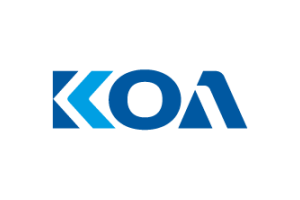Cool paint technology from Nissan
New paint lowers the temperature on the vehicle surface
More than just a »cool« colour: Nissan is testing a new paint technology that is designed to reduce the temperature on the vehicle surface and thus also in the interior on hot days. This reduces the demand on the air conditioning system, which can save energy.
The new paint was developed in collaboration with Radi-Cool, a specialist in radiant cooling. The paint consists of synthetic composite materials with structures that do not normally occur in nature.
Feasibility study at Tokyo-Haneda Airport
The project is one of many innovations from Nissan on the road to a cleaner and more sustainable society. The paint has been tested since the end of 2023 in a twelve-month feasibility study at Tokyo-Haneda Airport, which Nissan is conducting in collaboration with Japan Airport Terminal, Radi-Cool Japan and the airport service of All Nippon Airways (ANA). The paint was applied to a Nissan NV100, which is used as an airport service vehicle.
With its large, open tarmac, Haneda Airport offers the best conditions for testing the performance of the paint in a demanding, high-temperature environment under real-life conditions.
Although the end of the test phase has not yet been reached, the results so far are convincing: compared to a vehicle with a conventional paint finish, the vehicle with the new paint showed an exterior temperature that was up to 12 °C lower and an interior temperature that was up to 5 °C lower when parked in direct sunlight.
The cooling effect of the paint is particularly noticeable when a vehicle is parked in the sun for long periods of time. The cooler interior means that the air conditioning system works more efficiently, which in turn reduces the load on the engine or, in the case of electric cars, on the battery.
Nanomaterial with two microstructure particles
The nanomaterial embedded in the paint consists of two microstructure particles that react to light. One of the particles reflects the infrared rays of sunlight, which cause vibrations at the molecular level in conventional paints and thus generate heat.
The other particle is the real technological breakthrough. It generates electromagnetic waves that counteract the sun's rays and dissipate the heat energy away from the vehicle into the environment. Thanks to this combination, the particles in the paint reduce heat transfer to surfaces such as the vehicle roof, bonnet, doors and panelling.
The project is led by Dr Susumu Miura, Senior Manager in the Advanced Materials and Processing Laboratory at the Nissan Research Center. He played a leading role in the development of Nissan's award-winning acoustic material and has dedicated much of his career at Nissan to researching solutions that make cars quieter, cooler and more efficient.
Learning from buildings and structures
Radiant cooling paint technology is not entirely new, but is more commonly applied to buildings and structures. The paint layer here is often very thick and must be applied with a paint roller. As it does not contain a clear top coat, chalk-like residues can remain if touched.
The biggest challenge for Miura and his team was therefore to develop a paint that contained a clear topcoat, could be applied with a spray gun and also met Nissan's strict standards for paint quality.
Six times thicker than conventional car paint
Since the start of development in 2021, Miura and his team have tested more than 100 material samples and are currently testing a coating thickness of 120 µm, which is around six times thicker than conventional car paint. The tests show that the paint is resistant to salt and breakage, does not peel off, does not scratch and does not react chemically, and that the colour is consistent and repairable. In the further course of development, Miura and his team will research thinner variants that should offer the same cooling performance.
Although testing and development are not yet complete, Miura and his team hope that the paint will one day be available for special orders and in a variety of colours. The expert sees great potential for the new paint technology, particularly in the area of light commercial vehicles such as delivery vans and ambulances, which are in use for a large part of the day.





